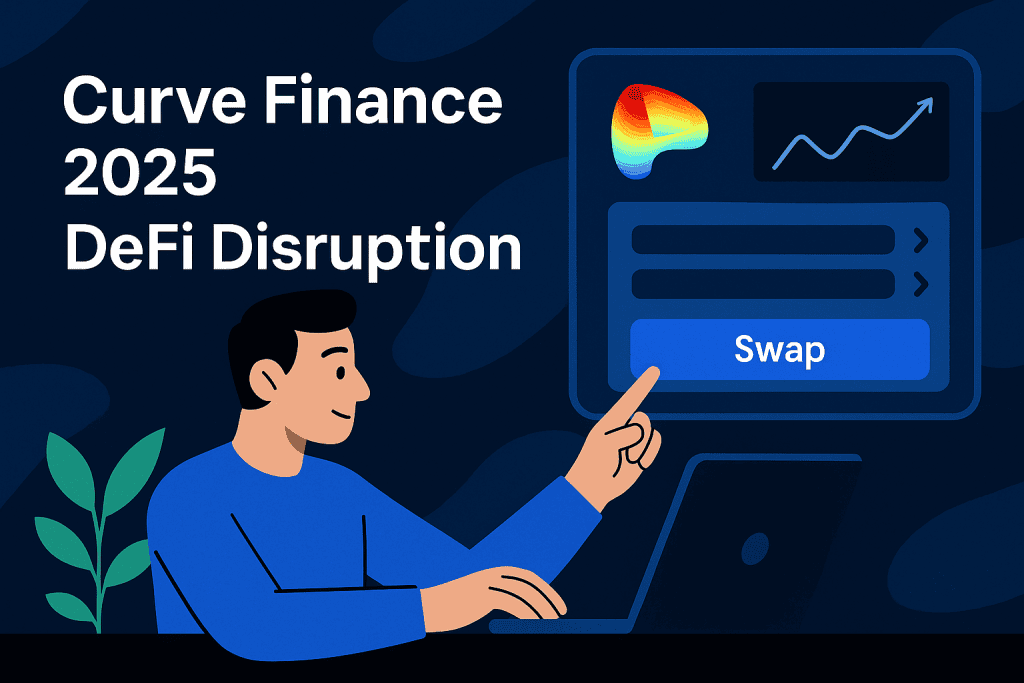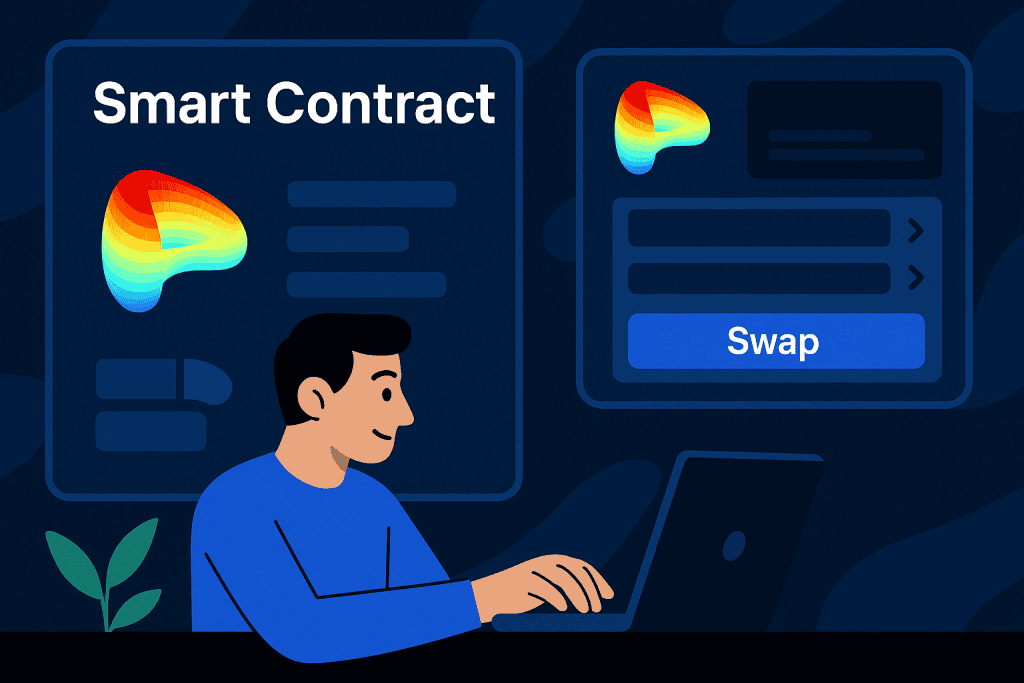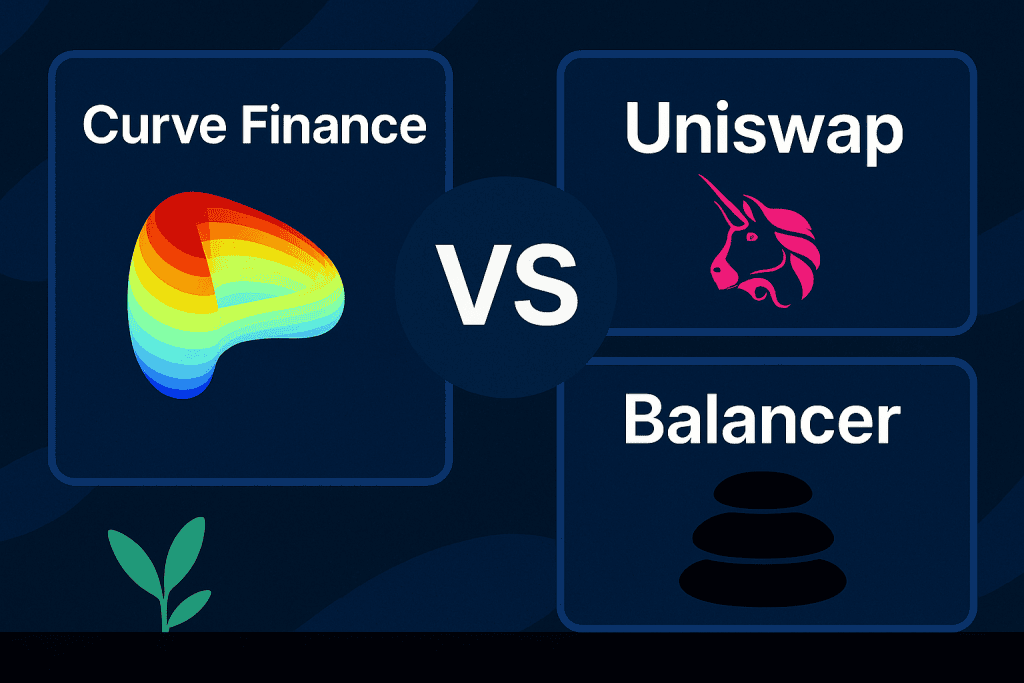
Have you ever felt like traditional finance just isn’t built for you? Like it’s missing transparency, agility, or frankly—interest that actually earns? That’s exactly what pulled me into the decentralized world of finance, and more specifically, into Curve Finance.
The first time I stumbled upon Curve, it felt like I’d uncovered a hidden chamber in the crypto labyrinth—one that promised low fees, minimal slippage, and an almost elegant simplicity in a space that’s often tangled and chaotic. But Curve isn’t just another DeFi protocol; it’s a purpose-built platform that makes stablecoin trading efficient. And boy, did it live up to the hype.
In this blog, I’m going to take you through my personal Curve journey, diving into how it works, where it shines, and yes, where it needs a little polish. So grab your digital wallet and let’s dive into the Curve Finance review—crypto-style!
Overview of Curve Finance
Let’s start with a big-picture understanding of what Curve is and why it matters. If you’re into stablecoins, low fees, and yield farming, Curve Finance is likely one of your most visited DeFi apps—if not, it probably should be.
Curve Finance is a decentralized exchange (DEX) optimized for trading assets that are intended to remain at similar prices, such as stablecoins and tokenized versions of cryptocurrencies (think USDC, DAI, wBTC, stETH, etc.). It uses an Automated Market Maker (AMM) protocol, much like Uniswap, but with a formula that prioritizes minimal slippage over a broader trading range.
Core Features at a Glance
- Stablecoin-Centric Swaps: Ideal for trading assets like USDT, USDC, DAI with near-zero slippage.
- CRV Governance Token: Offers voting rights, yield boost opportunities, and control over protocol upgrades.
- Liquidity Pools & Yield Farming: Earn fees + boosted CRV rewards by locking liquidity.
- Cross-Chain Integration: Curve runs on Ethereum, Arbitrum, Optimism, and more.
- Boosted Rewards via veCRV: Lock CRV to maximize returns and influence governance.
- DAO Governance: Decentralized decision-making through on-chain voting.
- Advanced Math Behind the Scenes: The bonding curve formula is optimized specifically for low-volatility asset pairs.
Watch this deep-dive video for a full walkthrough:
In-Depth Analysis of Curve Finance

This section explores the real-world functionality of Curve. Whether you’re a DeFi newbie or a seasoned yield farmer, understanding Curve’s mechanisms can help you optimize your returns.
User Interface and Experience
When you first land on the Curve website, you might be shocked by its minimalist, even archaic, user interface. But don’t let appearances fool you. The retro design is actually intentional. It allows for blazing fast loading times, and reduced dependencies mean it’s more secure.
Navigating the interface is straightforward once you get your bearings. Pools are neatly organized, and all relevant information—APYs, liquidity, volume—is clearly displayed. And connecting wallets like MetaMask, WalletConnect, or Ledger is as simple as a few clicks.
But here’s the secret sauce: once you realize Curve is built for function over form, you’ll appreciate just how efficient and intuitive it really is.
Performance and Reliability
Where Curve really shines is in price execution and fee savings. For example, swapping 10,000 USDT to USDC on other DEXs might cost you 20–30 basis points (bps) in slippage. On Curve? You’d barely notice a loss. That makes it the top choice for institutions, whales, and smart DeFi users.
The platform’s customized AMM formula is different from that of Uniswap. Instead of accommodating wide price swings, it narrows in on assets expected to stay close in price, thereby minimizing slippage and maximizing capital efficiency.
In real-world testing, swaps on Curve executed significantly faster and cheaper than on Balancer or SushiSwap, especially for assets like stETH, USDC, and FRAX.
Design and Security
Security-wise, Curve has undergone multiple high-profile audits by firms like Trail of Bits and Quantstamp. The team actively engages in bug bounty programs and uses DAO-driven proposals to upgrade its systems.
Its governance model is based on CRV tokens, which can be locked for voting escrow (veCRV). Locking CRV boosts your voting power, yield share, and pool incentives—creating a complex but rewarding incentive structure.
Curve Finance Comparison
How does Curve Finance hold up against the competition? Let’s put it side by side with some DeFi heavyweights like Uniswap and Balancer.

| Feature | Curve Finance | Uniswap V3 | Balancer |
|---|---|---|---|
| Optimized for | Stablecoins & Pegged Assets | All tokens | All tokens with weighted pools |
| Fee Structure | Low (0.04%) | Medium (0.30%) | Variable |
| Governance Token | CRV | UNI | BAL |
| Yield Farming | Yes (Boostable) | Yes (via external platforms) | Yes |
| Interface | Minimalist/Retro | Modern | Tech-heavy |
Curve clearly leads in low slippage and stablecoin use cases, while Uniswap offers broader token support.
Curve Finance Pros and Cons
Every DeFi protocol has its strengths and trade-offs. Here’s a breakdown of the pros and cons based on usability, security, and functionality.
| Pros | Cons |
|---|---|
| Super low slippage on stablecoin trades | UI feels outdated to beginners |
| High APYs for liquidity providers | Requires deeper DeFi knowledge |
| DAO-led governance via CRV tokens | Gas fees still high during peak times |
| Strong audit history and reputation | Complex reward mechanics (veCRV, gauges) |
Despite a few learning curves (pun intended), the protocol holds its own as a DeFi powerhouse.
Conclusion
Curve Finance is not your average DEX. It’s an expertly engineered protocol with a clear focus—optimize stablecoin liquidity while offering users high yields, flexible governance, and advanced trading efficiency. If you’re serious about DeFi, ignoring Curve would be like ignoring Ethereum—it’s foundational.
Whether you’re earning CRV, locking it as veCRV, or simply swapping stables, Curve continues to push the limits of what DeFi should be: permissionless, efficient, and community-driven.
Curve Finance Rating
So, how do I rate Curve Finance after weeks of testing and diving deep?
Final Rating: ★★★★★ 5 out of 5 stars
A nearly perfect tool for stablecoin enthusiasts with room to grow in UI and education tools.
Check out this tweet that reflects public sentiment:
FAQ
What is Curve Finance best used for?
Curve Finance is ideal for trading stablecoins and pegged assets with minimal slippage and low fees, making it perfect for DeFi users focused on capital efficiency.
How do I earn on Curve Finance?
You can earn through liquidity provision and by staking CRV tokens. Locking CRV as veCRV boosts your yields and gives you governance voting rights.
Is Curve Finance safe?
While no DeFi platform is risk-free, Curve Finance has a strong audit track record, active community governance, and a transparent operating model that earns trust.
Resources
- Coin Bureau. Curve Finance (CRV) Review
- 99Bitcoins. Curve Finance CRV Review
- Coin360. Curve Finance Review
- Twitter. Boy1Sniper’s DeFi Insight
- YouTube. Curve Finance Review 2025
